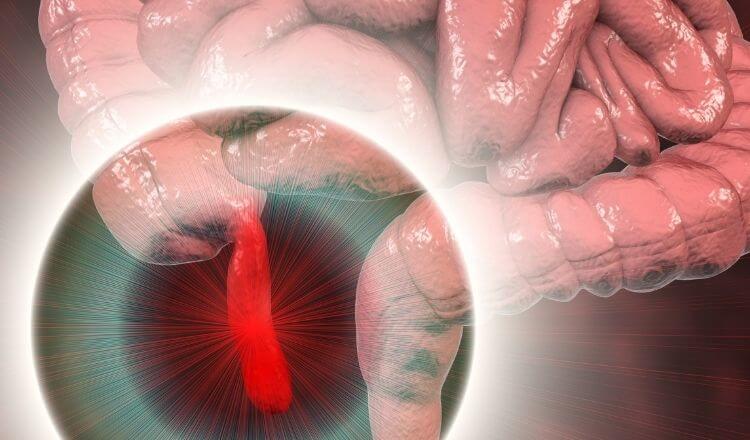
Appendicitis therapy in Munich
Appendicitis occurs when the appendix, a small worm like appendage to the large intestine, becomes inflamed. Appendicitis can occur at any age in any person. There are several causes of appendicitis. It may be caused by mechanical obstruction, such as a fruit seed obstructing the appendix, or sometimes by a bacterial infection. There are two forms of appendicitis: acute and chronic. Both can be dangerous if the appendix ruptures emitting bacterial and infected material (pus). Eventually, a ruptured appendix causes peritonitis and septic shock. Left untreated, mortality from appendicitis is high.
In most cases
an operation is necessary
Hospitalization mostly
2-3 Days
Able to work afer
a week
Symptoms
There may be typical or atypical symptoms for appendicitis. Pain may begin in the upper abdomen and spread to the navel and then to the lower right gut. It may become painful to walk, and patients may seek compensating positions such as pulling up the legs to relive the pain. There can be accompanying loss of appetite, nausea and vomiting. This may be accompanied by fever, though this is not necessary. Appendicitis can progress with atypical symptoms, where pain begins and remains in other parts of the abdomen usually the right side. The main complication by appendicitis is a ruptured appendix that allows infected pus to seep into the abdomen, leading to peritonitis and abscess. This condition is life threatening unless treated through surgery.
Diagnosis
Three procedures are used to diagnosis appendicitis:
- Physical examination for pain at certain points: McBurney’s point is tenderness in the right lower quadrant of the abdomen when light pressure with the fingertips is applied. The Lanz point is lower middle right side of the gut between the pelvic bones.
- Laboratory examination: An inflamed appendix causes an increase in white blood cells in blood samples taken from the patient.
- Ultrasound examination can be used to diagnose appendicitis.
- A CT scan (Computed tomography) can be used to diagnose appendicitis, especially by a suspected abscess or ruptured appendix.
- Women are referred to a gynecological examination is often used to rule out the possibility of infections in fallopian tube or ovaries.
Testimonial from a patient:
Very nice place, I had nice experience there with operation and the doctor is very careful and taking good care after my surgery.
Source: Google

Therapy
Conservative
Surgery
Minimal Invasive appendectomy
Conventional appendectomy
Prognosis
Appendectomy is performed often and is seldom accompanied by complications if performed early in the course of appendicitis. The laparoscope minimal invasive procedure heals quickly and allows for a faster introduction of normal diet. Usually a patient can leave hospital after 1-2 days, and can begin working again after a week’s convalescence.
Notice: Preoperative preparation: Please inform your physician if you are taking blood thinning medication such as Aspirin® and Marcumar® as they may lead to complications during surgery.
Your health is
important to us
Office Hours
Monday, Tuesday, Wednesday: 8:30 – 16:00
Thursday: 8:30 – 18:00
Friday: 8:30 – 13:00
and by appointment
